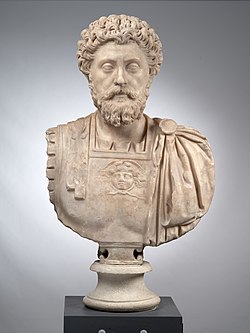
| Millennia |
|---|
| 1st millennium |
| Centuries |
| Decades |
| Years |
| Categories |
The 160s decade ran from January 1, 160, to December 31, 169.

| Millennia |
|---|
| 1st millennium |
| Centuries |
| Decades |
| Years |
| Categories |
The 160s decade ran from January 1, 160, to December 31, 169.

160
161
162
163
164
165
166
167
168
169
160
161
162
163
165
166
167
168
169
... So began the joint reign of Marcus Aurelius (ad 121-180) and Lucius Verus (ad 130-169), an event unparalleled in ...